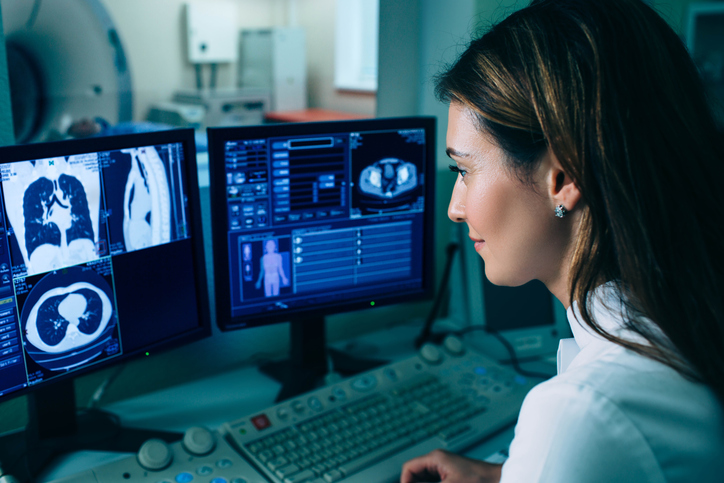Like most physician specialties, radiology is experiencing a labor shortage driven by burnout and an aging workforce. AI is often heralded as something that can mitigate workforce issues in radiology and other healthcare sectors, but of course, the solution isn’t a slam dunk.
One of the most important considerations that provider organizations should take when adopting AI to address their workforce shortage is to ensure that radiologists are involved early-on in decisions about what new tools to implement. That’s according to Dr. Jocelyn Chertoff — chair of the department of diagnostic radiology at Dartmouth Health. She sat down for an interview last week at RSNA 2023, the annual radiology and medical imaging conference in Chicago.

With the Rise of AI, What IP Disputes in Healthcare Are Likely to Emerge?
Munck Wilson Mandala Partner Greg Howison shared his perspective on some of the legal ramifications around AI, IP, connected devices and the data they generate, in response to emailed questions.
When a health system introduces a new piece of technology, Dr. Chertoff said that it’s common for leadership to tell clinicians that the idea was presented and approved by the department chairs. But if you were to ask the department chairs whether or not they were consulted about the decision to onboard a new tool, they would probably tell you that their opinion wasn’t sought, she declared.
“When you say you involved the stakeholders, did you actually ask their opinion? Or did you just present to them the thing that they’re going to do?” Dr. Chertoff asked. “They’re always going to say they involved the doctors, but how did they involve the doctors? Did they send out one email that said we’re going to adopt this thing? Half of the system doesn’t even open those emails because they know that they’re worthless.”
To adopt technology that will truly make a difference, hospitals must ensure their decision-making team includes clinicians, and preferably a diverse range of them, she argued. Groups with a varied range of perspectives are proven to make better decisions, Dr. Chertoff noted.
If hospital administrators truly want to ease the burden on radiologists, they should focus on implementing tools that facilitate workflow integration, she suggested.
More and more radiologists are opting for remote or hybrid work, and more and more hospitals are forming relationships with one another in which radiologists work at multiple locations, Dr. Chertoff pointed out. This means that the radiology workforces require technology that allows them to easily access their workflows regardless of their location.
“When I began to do this kind of work, we literally had separate workstations with a desk, screens, and a computer. So you would read for one hospital, then get up and go to another seat and sign on to a completely different system that doesn’t look the same and doesn’t act the same. You would try to adjust and try to read some films, and then they say ‘Oh, well there’s an emergency study.’ And so you go back. And then you have a resident you’re trying to teach — it would make you insane,” she explained.
Workflows aren’t as disconnected as they were when Dr. Chertoff began her career decades ago, but there are still interoperability concerns that cause unnecessary burnout among radiologists, she noted. To remedy this, the industry needs more technology to standardize file types between different facilities and ensure that radiologists can quickly access and switch between their various workflows, Dr. Chertoff declared.
Workflow technology that helps radiologists more easily access patients’ past images would be greatly beneficial as well, she added.
“Radiologists really depend on looking at the prior study, if there is one, to help their assessment. If you have good technology, it’s all there in a minute. When your study opens, you’ve got all the comparisons, you’ve got the electronic medical record, you don’t have to keep clicking. That’s not easily achieved, and that’s the kind of thing where I think AI could do amazing things,” Dr. Chertoff said.
AI tools that help prioritize workflows can also reduce burnout among radiologists, she noted. For example, Dartmouth uses a tool from Aidoc that flags images that have a high likelihood of being positive so that radiologists can read these studies first.
In Dr. Chertoff’s view, AI has yet to prove itself in the radiology field as something that can have a widespread, lasting impact on the burnout crisis. But there is potential there, and AI developers should continue to incorporate insight from clinicians if they want to build better tools, she said.
Photo: Darunechka, Getty Images















